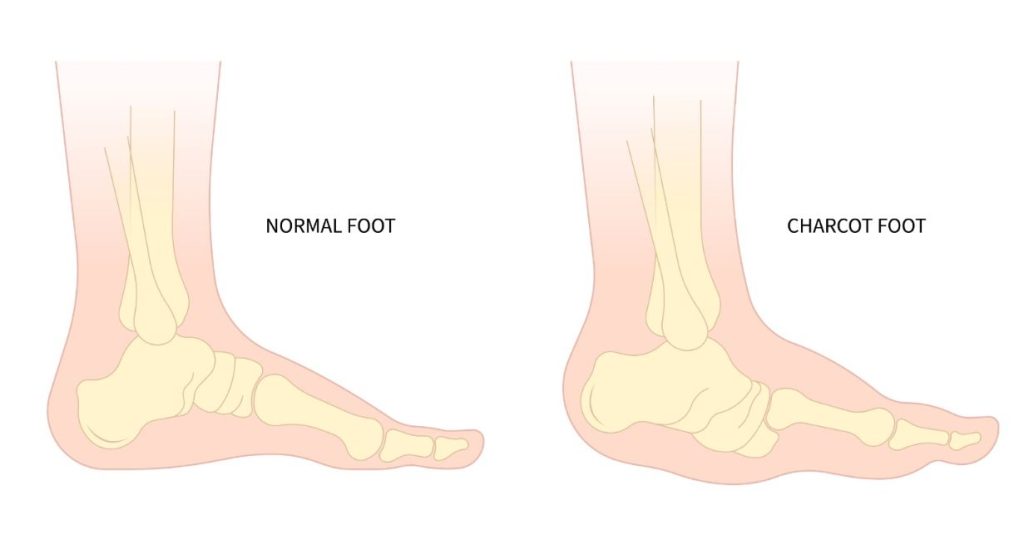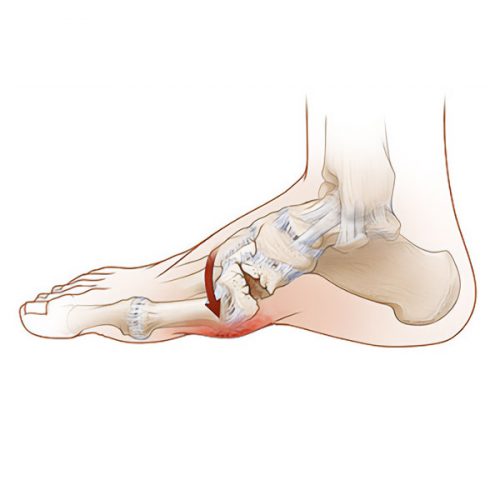
Charcot Foot: Silent Threat to Your Feet
Charcot Foot is a severe, progressive disease that is often silent until it is too late. It mainly affects those suffering from diabetes or neuropathy, thus becoming a “silent threat” to those at risk. The disease causes gradual, irreversible damage to the bones, joints, and soft tissues of the foot. If left undiagnosed or untreated, the Charcot Foot can lead to deformities, ulcers, infections, and sometimes even amputations. The prevention of long-term complications lies in early detection and timely treatment. Knowing the causes, symptoms, and the procedures for managing Charcot Foot can help you safeguard your feet and maintain better foot health.
What is Charcot Foot?

Charcot Foot is referred to as a form of Charcot Arthropathy that indicates a seriously damaged foot containing bones, joints, and soft tissues resulting from damage in nerves. Such condition normally manifests among individuals who experience neuropathy. Notably, diabetic patients develop such neuropathy and damage of the nerve that disqualifies one’s capability of feeling either the pain or any injury occurring; it creates unnoticed traumas that may slowly increase with time. The foot can deform due to weakened bones, which misalign joints and create instability, thus leading to unsteadiness in walking.
Causes and Risk Factors of Charcot Foot
The most common cause of Charcot Foot is peripheral neuropathy, where there is loss of sensation in the feet. This is very common in diabetes patients due to the long term effect of high blood sugar that destroys nerves. Poor circulation, obesity, alcohol consumption, and trauma to the foot are other risk factors. The condition may also be genetic. Family history of Charcot Foot can increase the chances of getting it. The risk factors must be identified early in life for prevention.
Symptoms of Charcot Foot
It progresses, without many symptoms until it becomes fully established. Its first manifestations include swelling, redness, and warmth of the foot. These manifestations can easily be confused with an infection or minor injury. However, in advanced cases, it can show such significant deformity in the foot, loss of stability, and changes in foot form that people have trouble walking and can develop ulcers.
Why Charcot Foot is Frequently Missed
Charcot Foot often gets diagnosed wrongly with the foot conditions being sprain, infection, or an arthritis due to similarities in those. It often doesn’t feature a key symptom, which characterizes many other diseases related to feet-that is pain, hence harder to identify earlier. Early signs are dismissed like redness and swelling, further causing a delayed diagnosis. Additionally, as it tends to occur in diabetics, patients attribute this symptom towards the general complication that is related to a diabetes patient’s condition.
How Charcot Foot Progresses
Charcot Foot develops in stages. In the acute phase, the foot becomes swollen and red, with bones and joints showing signs of stress and injury. The subacute phase involves healing but can still lead to deformities as the bones continue to break down. In the chronic stage, the foot may undergo permanent changes, resulting in severe deformities and functional impairment. If not treated, the condition may worsen, so early intervention is necessary.
Diagnosis of Charcot Foot
Diagnosing Charcot Foot involves a thorough physical examination and imaging tests such as X-rays and MRIs to assess the extent of damage to the bones and joints. A doctor may also conduct nerve tests to confirm peripheral neuropathy. Early diagnosis is crucial since it prevents the progression of the condition into more serious stages, which might require surgical intervention. A podiatrist, orthopedist, or other specialist is often consulted for proper diagnosis and treatment planning.
Treatment Options for Charcot Foot
Treatment of Charcot Foot depends on the level of severity. Early on, rest, elevation, and orthotic footwear may help reduce stress on the foot, aiding in healing. Surgery might be needed in the case of a severe condition where there are deformities to correct and stabilize the foot. In the management of the disease, there is often the use of pain relief medications and anti-inflammatory drugs. For proper management over time, there should be good care and monitoring of the foot.
Prevention of Charcot Foot
Prevention of Charcot Foot is mainly about managing underlying conditions such as diabetes. The risk can be reduced through maintaining blood sugar levels, wearing protective footwear, and regular inspection of the feet. People with neuropathy should be more cautious to avoid injuries and trauma to the feet. Routine visits to a podiatrist for foot examinations are also important to catch early signs of Charcot Foot before serious complications arise.
Living with Charcot Foot: Tips for Management
Patients suffering from Charcot Foot have to get accustomed to new habits and manage their symptoms. Use of custom orthotics and having shoes that support your foot are highly recommended. People with Charcot Foot require considerable physiotherapy sessions in order to have greater foot mobility and strength. Managing emotional challenges is important, as living with a chronic condition can affect mental well-being. Getting along with the help of a support group or counseling may help in overcoming emotional responses to Charcot Foot.
